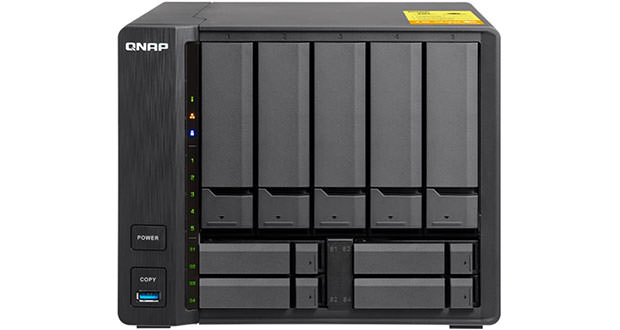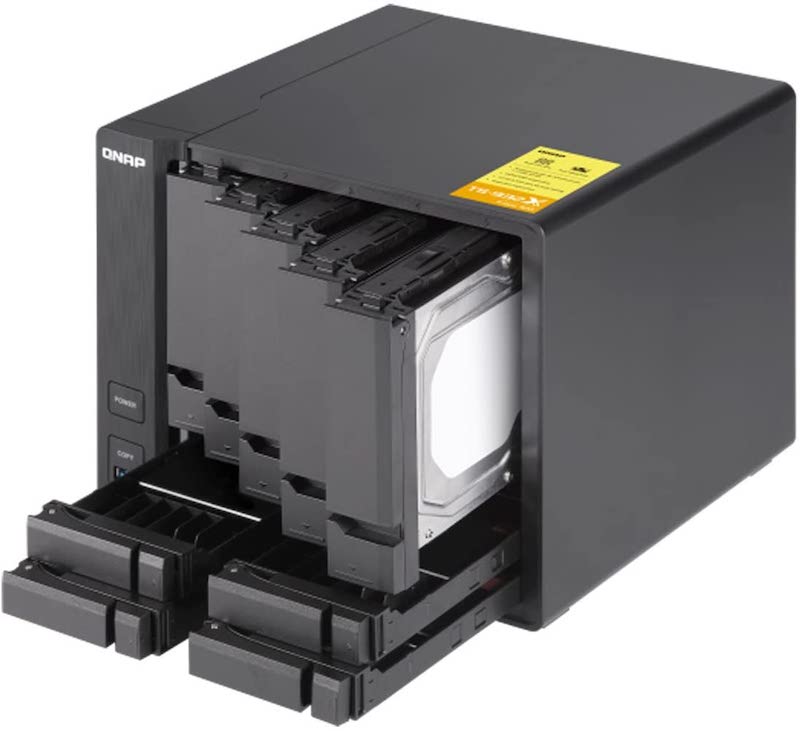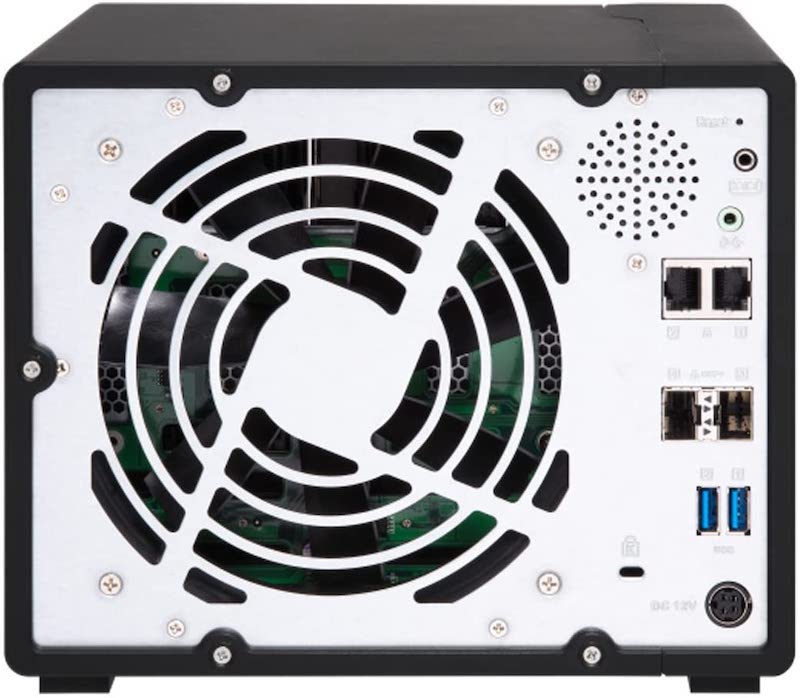Qnap TS-932X: 9-unit super NAS to project into the future
There are various types of NAS solutions, but some more than others need to be explained a little: there is a way and a way to store data on the network. Here is our insight on Qnap TS-932X, a 9 unit designed for the company that invests in the future.
If we wanted to get a quick idea of Qnap TS-932X, maybe having a little experience on smaller models like the 2 or 4 units, we would risk falling into an easy trap: it’s a NAS with 9 units instead of 2 or 4, what else will there be? A trap that even in good faith would not allow us to change the point of view that we have consolidated over time.
A 2 or 4 unit NAS can be used by the small company but also by the home user, for needs that are above all of a quantitative nature. So much space in short, much more than on a single external disk, with the immense advantage of having an enormously higher level of security thanks to the possibility of recovering or using data directly even in the event of failure of one of the disks (we can say with a certain safety margin that no one opts for RAID 0 configuration on the NAS).
There are contexts in which performance and a whole series of features become fundamental, not within reach of the simplest NAS. In such a context Qnap TS-932X is placed, where that 9 indicates the number of installable units. In the meantime, let’s take a look at the datasheet, and then move on to some real usage considerations.
|
Qnap TS-932X |
|
| Number of units | 9 |
| Unit type | 5 3.5-inch bay 4 2.5-inch bay |
| SoC | AnnapurnaLabs Alpine AL-324 ARM® Cortex-A57 quad-core 1.7GHz |
| Memory | 2 or 8 GB SODIMM DDR4 (1 x 2, 1 x 8 GB) maximum 16GB |
| Flash memory | 512 MB (Dual boot OS protection) |
| Gigabit Ethernet ports (RJ45) | 2 |
| 10 Gigabit Ethernet ports | 2 x 10G SFP + |
| Dimensions | 224.7 × 182.7 × 223.6 mm |
| Power supply | External, 120 W, 100-240 V AC |
Qnap TS-932X uses SoC Arm, AnnapurnaLabs Alpine AL-324 ARM Cortex-A57 quad-core 1.7GHz, combined with a quantity of SODIMM memory (depending on the model) that can be 2GB or 8GB, expandable up to 16GB.
One of the strengths is the presence of two Gigabit Ethernet ports and two 10 Gigabit Ethernet, for a total of 4. A fairly similar model of QNAP, TVS-951X, focuses on a more powerful processor but has only two ports, one Gigabit the other 10 Gigabit. We will talk about the prices later, to understand that the TS-932X can be spot on also in that respect.
Who needs such a NAS?
Still, on the practical side, this NAS has 5 slots for 3.5-inch drives (but with the adapter, you can also install 2.5-inch ones, HDD or SSD), plus another 4 only 2.5 inches (probably for the use of SSDs in this format). With a home user approach, one wonders what all this abundance is for, if not to increase the overall capacity, but this is where the NAS under analysis plays its cards.
For the first time with SoC Arm, we find the Qtier proprietary solution: it is an auto-tiering system (other competing solutions also have it. Even if under another name) that allows you to automatically move the data most used or susceptible to work peaks on high-performance drives, while data, cold, (those used less frequently) on high-capacity drives. Probably, in the first case, the data will be moved to the Solid-State Drive, in the second on the 3.5-inch mechanical disks.
This is a truly important technology for a company: it allows us to have exceptional transfer performance with the most accessible data, without having to use a NAS entirely made up of SSDs. All managed precisely by this technology automatically, as soon as it is put in the conditions to ” study ” the frequency of access to data and which.
To put it in the industry, you get a lower storage TCO. TCO stands for Total Cost of Ownership, and in this case, referred to storage: you can invest in very fast units only for part of the overall capacity, opting for much cheaper mechanical hard drives for the rest. There are other arrows in the arc of the Qnap TS-932X, such as snapshots (record the status of data and system to allow for possible data recovery from accidental deletion or malware attacks), support for LXC and Docker containers and much more, available on the official website.
If for several NAS equipped with SSD, the bottleneck may be the presence of Ethernet ports with little bandwidth (SSDs are often much faster than the interface through which the data will have to pass), this is not the case with Qnap TS-932X, which has 4 ports, two of which are 10 Gigabit. If it is true that this is a network infrastructure not yet widespread because of the costs, it is certainly farsighted to opt for a NAS of this type in the future.
Product prices and availability are subject to change. Any price and availablility information displayed on Amazon at the time of purchase will apply to the purchase of any products.




